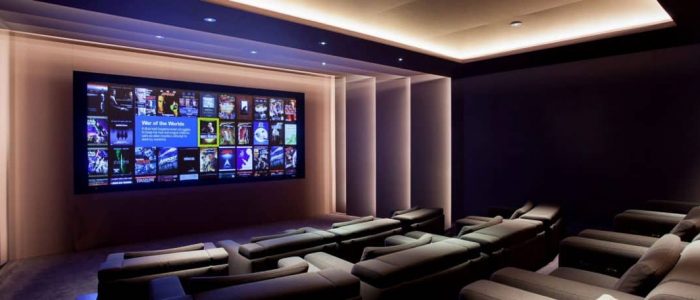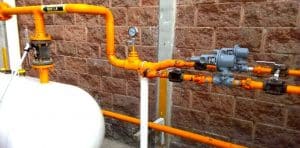Thinking of installing a home theater system? How to build your own movie theater in a room of your house? What are the options and steps to install and configure a home theater system without complications?
Having a home theater is like bringing a movie theater into your own home… but does this have to be a difficult thing to do?
Not necessarily. Just follow these steps:
Trace the path of connections
Your home theater is going to need a source component, be it a satellite or cable box or a Blu-ray or DVD player, that will transmit signal to the TV and speakers as end points.
It involves transmitting the video signal from a source component to the screen or projector, and the audio signal to the speakers.
While many people opt for a media player, you can also build your home theater with a satellite decoder. See more here: https://el-mejor.top/mejor-decodificador-satelite/
Connect it all
The essential home theater setup typically includes a television, AV receiver, media player (DVD or Blu-ray Disc), a media streamer, and possibly a recorder.
Basic home theaters have at least five speakers and a subwoofer.
Set up your home theater receiver
The home theater receiver is something of the core of your theater system. It's where most of the connectivity comes together and where all the audio decoding, processing, and amplification happens to power the speakers. The home theater receiver is where all the audio and video components of the system are connected.
- Send video from the home theater receiver to the TV: You need to connect the TV monitor output, which is usually HDMI, from an AV receiver to one of the video inputs on the TV (also via HDMI). With this you will be able to see the video image of all the video devices that you connect to the receiver of your home cinema.
You need to turn on the AV receiver and select the correct video input. This allows you to watch the video stream from the home theater on the TV screen. - Sends audio from the receiver from the television to the home theater receiver: The star way to get sound from a television to a home theater is to connect the audio outputs of the television to the auxiliary audio or TV inputs of the AV receiver. Alternatively, you can use the audio return (HDMI-ARC) if your equipment has this possibility. In any case, you will be able to see the sources connected directly to the television and listen to stereo or surround sound audio in the programs that have it, through the home-cinema system.
Set up your TV
If your television receives the programs via antenna, then you need to connect that antenna directly to the television.
If your television is smart (Smart TV) you will have to make sure that it is also connected to the internet.
If you're using a cable or satellite box, connect the incoming cable to the set. You can connect your cable / satellite box to the TV, and the rest to the system.
Connect the audio / video output of your decoder directly to the television. Connect the box to the home theater receiver, and then route the signal to the television.
Configure your Blu-ray Disc, DVD and / or CD player
To play Blu-ray or Ultra HD Blu-ray Disc, the settings will vary depending on whether your home theater receiver has HDMI connections and whether the receiver can access the audio and video signals that pass through those connections. If yes, you only need to connect the HDMI output of the player to the receiver and the receiver to the TV screen.
If your home theater system only has HDMI pass-through, then you may need to get an additional digital audio connection (optical or coaxial) or analog audio connection between the player and the receiver to access the audio from the player.
If you have a 3D Blu-ray disc player, home theater receiver, and 3D TV, there are a few more things to keep in mind.
To use a DVD player, you need to connect one of the player's video outputs to the DVD video input on the AV receiver. If you have a DVD player with HDMI output, it is preferable to use that option. If it does not have HDMI output, you can combine an optical / coaxial digital cable from the player to the AV receiver.
Connecting a CD to an AV receiver is also possible. You need to take advantage of the player's analog or digital audio outputs. If you have a CD recorder, connect it to the AV receiver using the audio tape record / playback loop in / out connections.
Media Streamer
If you use a media streamer, such as Amazon Fire TV, Google Chromecast, or Apple TV, you need to connect it to the internet first, usually via a WiFi connection. To see the contents you can connect the transmitter to the TV using two different ways, using HDMI:
- Connecting it to TV directly.
- Directing it through a home theater receiver.
Connect and place your speakers and subwoofer
To finish the setup of the home theater system, the last step is to connect the speakers and subwoofer and place them properly.
It's about connecting the speakers to the AV receiver. You will have to pay attention to the positive and negative polarity (red and black) and make sure that the speakers are connected to the correct channel.
Connect the AV receiver's subwoofer line output to your suborder and position the speakers (be careful not to place them flush with the wall).
Use the built-in test tone generator and / or automatic speaker setup / room correction system to properly set sound levels.
Note that…
The above are just a few essential guidelines on how you can set up your home theater system. The extension, combinations and connection options vary depending on the number and type of components you have. Also the size, shape, lighting and acoustic properties of the room can influence its configuration.


